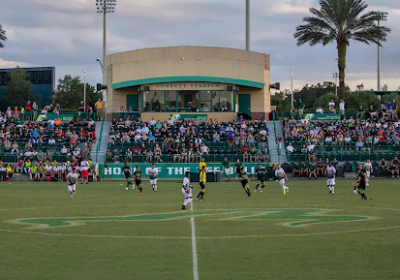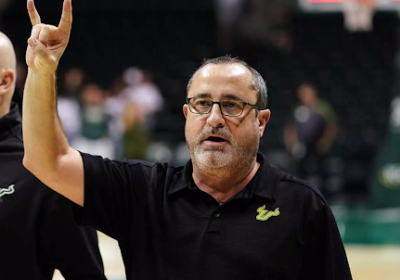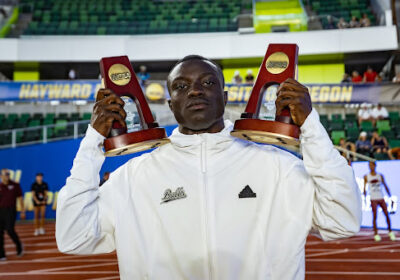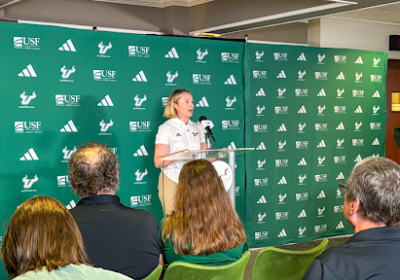Harlan’s five-year plan shows budget is a work in progress

USF athletic director Mark Harlan gave his five-year plan for USF Athletics during Thursday's Board of Trustees meeting.
ORACLE FILE PHOTO/ADAM MATHIEU
USF athletic director Mark Harlan addressed his vision for the future of USF athletics over the upcoming five years in front of the USF Board of Trustees Academics & Campus Environment workgroup Thursday, speaking on topics from conference realignment to the potential for an on-campus stadium.
Harlan’s five-part plan highlighted USF’s recent academic and on-field success despite what has been a low budget when compared with other institutions. Harlan said improving the budget is one of his key goals going forward and that begins with fans buying in to the football team.
“Are tickets important? Absolutely,” Harlan said. “Absolutely, we have to sell more season tickets. I don’t run from that, it’s a key focus of the strategic plan. We have to challenge our community to support us more profoundly. They’ve been waiting to invest in a winner over the last few years, I think they’ve got one now.”
Even with the pressing need for more fans in the seats, Harlan reported USF now has over 3,000 donors, nearly a thousand more than when he took over as athletic director in March of 2014.
Despite ticket sales trending in the right direction, USF still has ground to make up when it comes to funding.
According to USA Today, USF ranks 59th in revenue in the NCAA, behind other AAC schools such as East Carolina, UCF, Cincinnati and UConn.
An essential aspect to improving the budget is adding more donors, which is how Harlan said USF will be funding its 20th and newest sport, women’s rowing, which he projects will cost up to $1 million to start.
One potential way Harlan is looking into increasing donor support and ticket sales is the pursuit of an on-campus football stadium. In order to determine if this would be a good route to go, Harlan plans to conduct a feasibility study.
“The feasibility study is going to cover a couple different functions for us,” Harlan said. “It’s going to cover the cost associated with it definitively. It’s also going to look at locations. The great thing about this campus is that there are multiple opportunities. It’s time to zero in on which opportunity is best for this program.
And lastly, how we’re going to pay for it. Apparently these things aren’t free and so we really need to look into all these things and really decide if there’s an appetite for it. One thing I’m not going to do, nor is this president interested in is hurting this program as it stands today by doing that and frankly there’s examples of that in this country.”
When it comes to donor support and building a better budget, USF’s demotion from the Big East certainly didn’t make matters easier.
During his presentation to the board of trustees, Harlan said USF has seen its annual conference revenue shares drop from $11.4 million in 2012-13 to $6.4 million in the past academic year.
Harlan stressed USF is content with its position in a conference such as the AAC, but said he has been in discussions about the topic of conference realignment, much of which hinges on the success of the football team in the near future.
“I’m proud of all 19 of our teams, but it’s also fair to say football is a very significant piece,” Harlan said. “If you look at the last expansion efforts, it’s hard to argue that wasn’t the driving force. The great thing about USF is when you talk to other leaders on campuses, they know about our football program.
“They know in 19 years we’ve had eight bowl games, they know we’ve risen as high as number two. They know we’ve had 44,000 attendance in our past. In my office, I have the picture of the sold out stadium. It’s not like we haven’t done it. The story of USF football locally, maybe a little frustrating of late in terms of the dip. We’re on the way back. But nationally, with the story of USF football, the narrative is more positive with how far its come in such a short time.”








